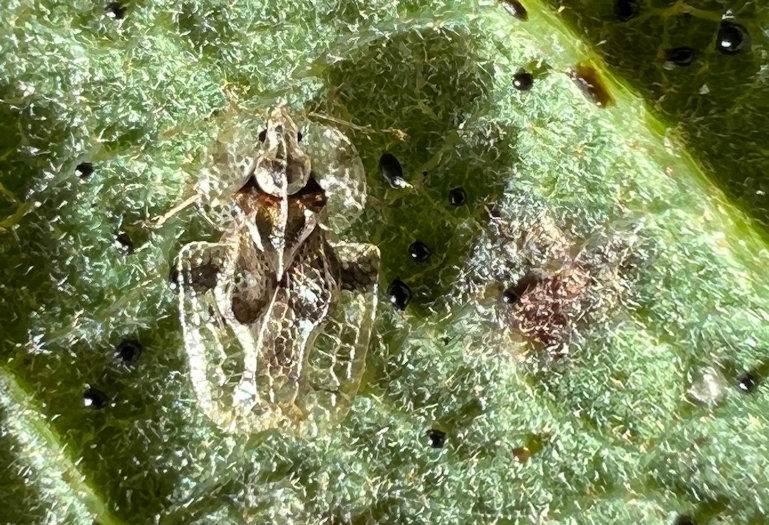Browning leaves on iconic Oregon white oaks may be due to damage from oak lace bug

SALEM, Ore. (KTVZ) – A non-native bug is now causing increasing damage to the state’s iconic Oregon white oak trees (Quercus garryana), the Oregon Department of Agriculture said Tuesday.
Although the oak lace bug (Corythucha arcuata) has been in Oregon since 2015,the damage they cause has been particularly noticeable this year.
Native from southern Canada to the eastern, central and southern U.S., this insect in Oregon is mostly a pest of urban oaks, although it can also infest related trees.
Oak lace bug adults are an eighth of an inch long and transparent. They look similar to non-native azalea lace bugs that have been attacking azaleas and rhododendrons in recent years.
Lacebugs occur on the undersides of leaves. They suck plant juices from photosynthetic cells that contain chlorophyll and thus cause leaf yellowing. On the underside of yellow-stippled leaves you can see adults, cast skins of nymphs and black droplets of excrement.
Treatment of this insect is generally not advised, because they are typically only an aesthetic pest that is not persistent year after year. Despite damage from this and other foliage pests, white oaks will drop their leaves in the fall and reflush the next year as normal.
It’s fairly common in fall to see yellowing and browning leaves on Oregon white oak. The color change can also be due to normal attacks from other insects, such as gall-making flies and wasps, leaf-mining caterpillars and flies, which come to an end when cold weather arrives. Brown leaves can also be damage from squirrels digging at twig gall grubs.
Along with most of our other trees, oaks are also being stressed by ongoing droughts and hot weather. This causes their leaves to turn brown earlier than normal.
Fertilizing will not “green up” damaged, yellowing or browning leaves and is not advised as it provides more nutrients not only to the tree but also the insects that attack it.
It should also be noted that this insect can bite although it does not typically do damage beyond a mild sting. Although oak lace bug does not seek out humans specifically, it can fall from trees onto humans and may give a bite as it tests to see if we are suitable hosts, it then becomes disinterested and crawls elsewhere in search of oak leaves.